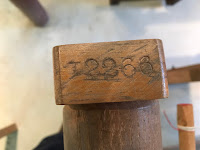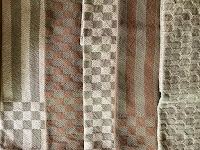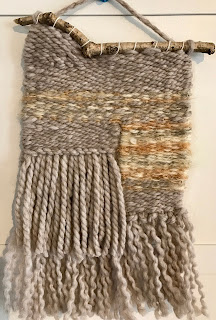 |
| Rug: Wool w/linen warp Charlene Marietti |
I confess. I abused a rug. It went like this.
I put a linen warp on my Harrisville rug loom, wove about two-thirds of the planned length, then stopped. I didn't mean to stop. Life got in the way. Specifically, a full time job. When I got home at night, I really had little creativity and little to no energy.The partially woven rug sat on the loom. It sat a long time. Years.
When personal time opened up and I had cleared the clutter and reclaimed my work space, I uncovered the rug. I wrote it off. It had sat too long. I would cut it off and start a new one.
But when I sat down, scissors in hand, to cut off the rug, I found that the warp was as good as when it was put on. What? How could that be?
Now if you've ever woven with a linen warp, you know that linen is not very friendly. Try as I might, every linen warp I have ever put on had some slush. It seems inevitable despite dozens of warping sticks. And when the tension is even a little bit off, the warp shows it. Except with this loom.
My loom is a Harrisville rug loom with shaft-switching device is a fantastic loom, but in this case the winner for utility goes to the warp extender. Functioning as a second beam, the warp extender overcomes the tension problem because once the warp is threaded and tied on in the front, there is no need to unwind the warp from the back beam.
A vertical solution to weaving on a warp that is stationary, that is, not wound on a back beam or equivalent, the warp extender can be raised nearly to the top of the loom, allowing the weaver to put up to seven feet of warp under tension and not worry about changing tension with the advancing warp.
Does the innovation belong to Peter Collingswood? Maybe. An early 1990's technical preview of the Harrisville Rug Loom notes as a special feature, "The new TENSION EQUALIZER is an innovative mechanism that Peter Collingswood incorporated into his own looms."
Instead of unwinding the back beam, the weaver advances the warp on the warp extender by lowering it. Couldn't be easier. And now I can report that the warp extender saved a rug.
I wove that rug to the end and finished it with a Taniko edge. What do you think?

































